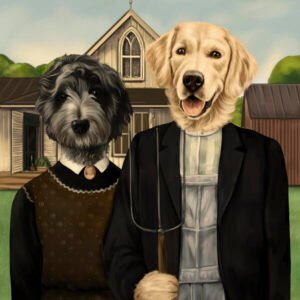Last Article
- The Psychology of Caricature: How Caricatures Help Reveal a Person’s Character

- Top 10 Occasions Where a Caricature Makes the Perfect Gift

- The History of Caricature: From Early Drawings to Modern Art

- How to Distinguish a Professional Caricature from an Amateur One

newsletter sign up
The History of Caricature and the Role of Caricaturists
Caricature is a unique art form that blends humor, satire, and bold artistic skill. Its evolution has been closely tied to the depiction of societal, political, and cultural aspects of life, remaining relevant for centuries. Below is an exploration of caricature’s history, the intricacies of the profession, and its enduring significance.
Caricature History
The origins of caricature date back to the Renaissance when artists began experimenting with exaggerated depictions of real-life subjects. Leonardo da Vinci is often credited with pioneering this concept, creating distorted sketches that highlighted exaggerated features, though it’s unclear whether his intent was humorous or scientific.
By the 17th and 18th centuries, caricature became more widespread, influenced by works such as De Humana Physiognomia by G.B. Della Porta and Expression des Passions by Charles Le Brun. Gian Lorenzo Bernini, a renowned Baroque sculptor, is considered one of the first to use caricature as a satirical art form, depicting prominent figures with humorous distortions as a subtle form of flattery.
In the 18th and 19th centuries, caricature evolved as both a crude and sophisticated medium. Honore Daumier’s lithographs, particularly those portraying King Louis-Philippe as a pear, are iconic examples. The pear shape reflected both the king’s physical features and French slang, where “poire” (pear) was a term for “simpleton.” Such works often combined visual exaggeration with clever wordplay to communicate deeper social or political critiques.
The Art of Caricature
A caricature exaggerates a subject’s distinctive features while preserving their recognizability. Often, the focus is on the face or head, emphasizing what makes a person unique. For example, politicians might be depicted with outsized jaws or exaggerated postures to emphasize their perceived character traits.
Caricatures have historically been used in print media—newspapers, magazines, and flyers—as a way to critique the powerful or entertain audiences. While traditionally created with pencil, markers, or paint, modern technology has introduced digital mediums, expanding the possibilities of this art form.
Caricature Artists vs. Cartoonists
Although caricature artists and cartoonists share some similarities, they are distinct professions:
| Aspect | Caricature Artist | Cartoonist |
|---|---|---|
| Focus | Real-life subjects in exaggerated styles | Fictional characters or scenarios |
| Purpose | Satirical or humorous representation of people | Entertainment or storytelling |
| Reference | Based on real individuals | Often entirely imagined |
| Medium | Portrait-like, detailed or humorous exaggerations | Simplified, whimsical, often non-realistic |
While cartoonists often create fictional characters like animals or objects, caricature artists need real-life reference points to create their exaggerated portraits.
The Profession of Caricaturist
Becoming a caricaturist requires talent, practice, and a deep understanding of anatomy, expression, and humor. Though many artists experiment with caricature, only a small number—fewer than 1,000 globally—pursue it as a full-time profession. Each artist develops their style, from highly detailed to simplified, humorous portrayals.
Caricaturists are often hired for events, creating personalized portraits for entertainment. Typically, an artist can draw 10-15 caricatures per hour, depending on complexity. For larger gatherings, multiple artists may be needed to accommodate all attendees.
The Power of Caricature
Caricature’s impact lies in its ability to balance humor and critique. It has served as a powerful tool for highlighting societal issues, from political corruption to cultural absurdities. However, it has also been misused to perpetuate stereotypes or propagate bigotry. This duality underscores the art form’s influence and responsibility.
As Kenneth Rivers aptly put it, caricature is “the artistic use of deformation for satirical purposes.” The best caricatures provoke thought, entertain, and challenge the status quo, all while celebrating the individuality of their subjects.
Why Choose Caricature Lives?
At Caricature Lives, we bring this timeless art form to life. Whether you’re hosting a corporate event, wedding, or private party, our skilled caricaturists capture the essence of your guests with flair and creativity. Each piece is a blend of artistry, humor, and storytelling, providing a unique keepsake for every individual.
Let Caricature Lives turn your event into a memorable experience with professional caricature artistry!











